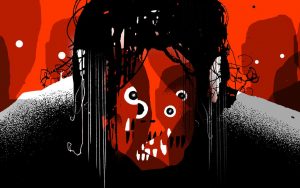The story of Frankenstein written in 1818 by Mary Shelley and its reenactment in 1931 are two very distinct forms of the same idea. There are various differences in plot points, characterization, thematic points, and even the ending. The main difference that sticks out to me is the manner of how evil is instilled in an individual. The 1818 version addresses how social constructs can play into the character and the attitude of a person and the 1931 adaptation believes that personality is innate and predetermined. There are examples in both versions of the text supporting these differing views.
Within the text, there is an instance where Mary hints toward her understanding of how personality is developed. The Monster tried repeatedly to gain the love and care that he would give out to others. From when he was keeping the old man company to when he saved the young girl, he was attempting to display himself as a sympathetic person who would rather turn the cheek than do harm to anyone. Just because of his appearance, everyone discriminated against the Monster and had prejudices of him being a horrible creature, even his creator Victor. Around the point in which the Monster met his breaking point and killed Victor’s younger brother, he proclaimed “I am malicious because I am miserable. Am I not shunned and hated by all mankind?” (Shelley, 102) The Monster was mistreated and became filled with rage and anger due to others; they refused his kindness and met him with hate at every turn. The Monster was fed up with the lack of reciprocation and became sadistic and harmful due to how others treated him on a constant basis. Mary Shelley seemed to believe that personality and character are developed through one’s experience in society.
In contrast, the film depicted the acquirement of character and personality as a predetermined in each human. Scriptwriters portrayed this ideal is by explaining that the brain in which the Monster acquired would determine his intelligence and morals. The initial brain retrieved for the Monster was that of a normal person, which insinuates that normal people are already made with morals. When the normal brain is dropped, it is switched with a criminal one; Dr. Waldman earlier explained that there were physical differences between the brain of a normal person and a criminal. Waldman and the little girl are then murdered seemingly because of the evil brain put inside of the Monster. Therefore, the brain in which he was given determined his outcome rather than how he was treated in society. This comes clear as a point attempting to be made by the screenwriters when the Monster is not treated terribly because of his looks and kills a little girl attempting to be his friend.
Intentions and messages within different versions of the story can be easily seen by the manner in which similar overarching themes are portrayed. The ideology of Mary Shelley in 1818 clearly reflected how character is learned through social interactions, and the message carried through this novel. Creators involved in Frankenstein the movie reflected their beliefs of character being an innate quality that people have from the beginning. The stories were written in different scopes and took two different forms to reflect what the authors found as the most important message to convey to the audience.

